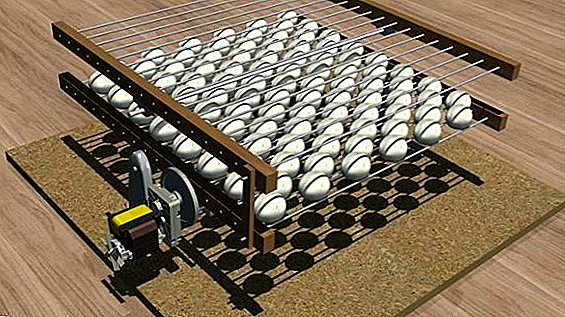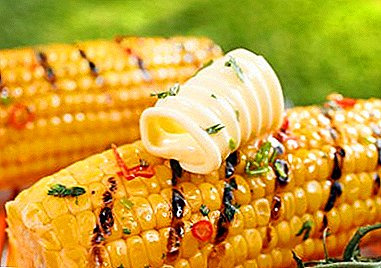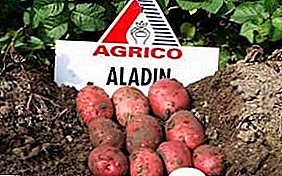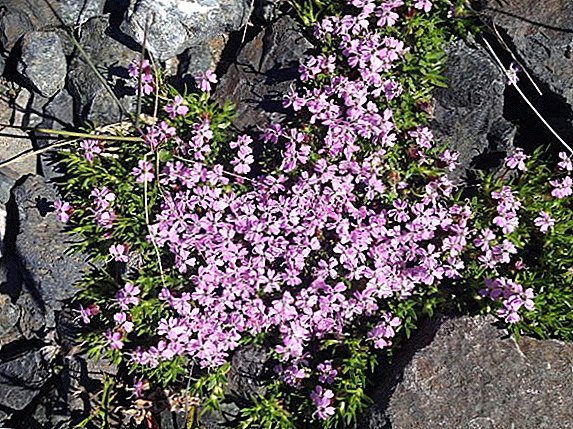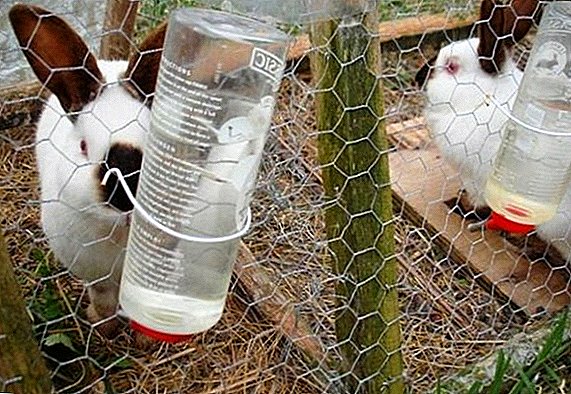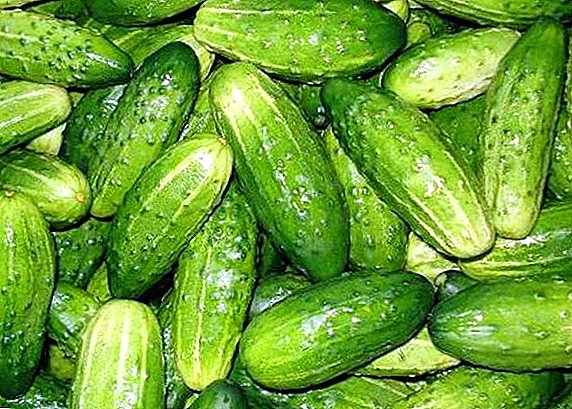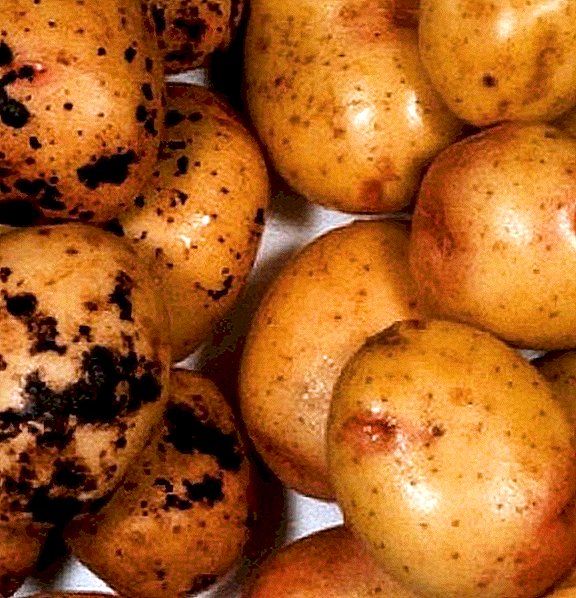 Some gardeners, in order to avoid crop losses from potato diseases, are planted root crops on innovative technologies in barrels, bags and under hay. But soon they are convinced that it does not save tubers from bacteria, fungi and viruses that provoke a variety of ailments. They ruthlessly hit healthy plants and their fruits in the open field, greenhouse and even in the cellar. The carriers of pathogens are often pests and other insects. Let us consider in more detail, what are the diseases of potatoes, and measures to combat them.
Some gardeners, in order to avoid crop losses from potato diseases, are planted root crops on innovative technologies in barrels, bags and under hay. But soon they are convinced that it does not save tubers from bacteria, fungi and viruses that provoke a variety of ailments. They ruthlessly hit healthy plants and their fruits in the open field, greenhouse and even in the cellar. The carriers of pathogens are often pests and other insects. Let us consider in more detail, what are the diseases of potatoes, and measures to combat them.
Important! It is almost impossible to immediately cure planted tubers from diseases of any nature. This is due to the fact that most pathogens infect the soil or seed. As a result, the fight against them should begin with the processing and treatment of fruits, as well as the thorough preparation of the beds for planting.
Bacterial Potato Diseases
Bacterial diseases of potatoes are provoked by various microbes, which from the tubers gradually spread through the stems, infecting the whole plant. It is extremely difficult to fight with them, since the soil in which the root crop grows also needs disinfection.
To cope with such a task, you need timely and competent seeding. Sometimes it will take years with alternate sowing in the infected area of microorganism-resistant crops, such as: wheat, maize, barley, radish, beet, cabbage, tobacco, legumes.
Brown Bacterial Rot
The disease occurs due to the activity of microorganisms Ralstonia solanacearum on potatoes. Its first manifestations are noticeable during the flowering period of the crop, when roots begin to form. At this time, there is yellowing and wilting of the foliage, it becomes shriveled and lifeless, and the stems go down and turn brown with time.
To the extent of reproduction of pathogenic bacteria, softening and putrefying processes are noted in the lower root part of the stem. Splits are well seen along the shoots, and infected veins become brown rotten in color.
If you cut off the stem of a diseased plant, dark brown fibers can be seen on the slice ring. When compressing such a germ, grayish-white, muddy mucus will be released from it.
Botanists brown rot qualify for vascular ailments of potatoes and mark the death of the bushes as a result of blockage of xylem veins by a dense gummy mass. There are cases when the disease is manifested only by verticillary wilting and ring rot, in which there is no splitting of the shoots and there are mucous secretions. 
The disease on potato tubers is expressed by softened vascular ring and the appearance of brown putrefactive elements on the core. Often the processes of decay begin in the repositories. They are accompanied by mucous secretions and unpleasant odor. Such potatoes infect all neighboring tubers and completely rot.
Did you know? According to the International Finance Corporation, Ukrainians consume about 4 million tons of potatoes annually, while the average annual yield of root crops is about 18-19 million tons.Leading agronomists of the country are drawing the attention of farmers and landowners to the fact that the fight against bacterial diseases of potatoes should be aimed at comprehensive protection against the pathogens described above. At the heart of all such measures is the management of relations between the internal and external population.
This means that the plant must be protected throughout the entire period of cultivation by various methods, including seed production and organizational and economic nuances, as well as the principles of combination of crops.
With the appearance of brown rot, crop rotation and the introduction of optimal fertilizers are of key importance in combating it. It will be possible to plant potatoes in an infected garden only after 5 years. Seed tubers need to carefully scroll and be sure to warm up for 20 - 30 days. This will help to correctly detect unusable material. It will also be indicated by a 0.002% solution of succinic acid, which is used to process the fruit for half an hour.
If during planting there is a need to cut the roots, the knife must necessarily be disinfected with formalin or potassium permanganate. Healthy seed potatoes, for prophylactic purposes, are planted before planting with chemicals such as: "TMTD", "Rizoplan", "Baktofit", "Polycarbotsin", repeating twice the seedling treatment before budding.
Well cultivated varieties with increased endurance to microbes: "Resource", "Ulyanovsk", "Luck", "Volzhanka". The fight against bacterial diseases of potatoes includes regular inspection of the site and the removal of diseased plants.
Experts advise to carry out the first cleaning after the stems reach 25 cm in height, the second - during flowering, and the third - a few weeks before harvest. It is important during this period to completely mow the tops, so that the soil has time to dry before harvesting the fruit. The entire harvest should be well dried before laying in the cellar. Preparatory work is needed in the repository.
To this end, they remove all last year’s vegetables and fruits, disinfect with a 2% aqueous solution of copper sulphate and process the walls with slaked lime. At the entrance to the premises lay a mat soaked with 5% solution of blue vitriol.
Important! For safe preservation of potato tubers in the cellar, the first 20 days the room temperature should not be below +13 ° C, and the humidity should be at 90%. In the future, you need a gradual cooling to 2 degrees.
Ring rot
Signs of ring rot are quite noticeable on tubers and potato biomass. They appear after flowering in the form of yellowing thin shoots and twisting leaves. Affected specimens are hard to snatch, even with general cell death. This happens due to the destruction of the vein structure of root crops and shoots.
The disease begins from the roots, but its first symptoms can be seen on the fruits only when they are cut. Yellow or brown rings at the edges of the core indicate further development of putrefactive processes that will eventually destroy the entire fetus. When pressed, gray-yellow mucus flows from the affected areas.
If during the inspection of seeds you did not notice any signs of rot and planted such a root crop, dwarf, poorly developed, refined shoots with small deformed leaves will grow from it. Do not expect a big harvest from such bushes.
In most cases, bacterial diseases of potatoes are caused by poor-quality planting material, or due to mechanical damage during harvesting of root crops, transportation of tubers in infected containers, as well as violation of storage rules. Today, there are no special toxic chemicals from putrefactive diseases of solanaceous crops.
They are fought with quarantine methods, which, in addition to competent preparation of planting material and harvesting, include sevosmenu for 3 years, the selection of resistant varieties, fertilization of potato fields with potassium preparations and the systematic removal of diseased plants at the first signs of rot.
Did you know? Potato disease destroys from 30 to 65% of the crop.
Wet rot
The disease begins with the core of the tubers and, often, in the initial stages of development is difficult to determine. Its root cause is bacteria or fungal pathogens that enter the root crop when damaged mechanically or are carried by pests. Based on these factors, it becomes clear why the potato is quickly rotting from the inside.
This process is expressed in the softening of the tubers and the spread of a strong stink. Rotten tissues are initially white, and then they turn brown, picking up dark shades. By the way, the peel is affected when the inside is completely rotten. It happens that the surface of root crops is covered with dark dents, from which a whitish starch substance results when squeezed.
If the root gets into cold conditions, its eyelids die off, and the process of decay begins. Therefore, these tubers should not be taken care of, it is better to use them immediately, otherwise they will spoil the whole crop. Farmers note that very often the potato is affected by this disease in the cellar, especially when the product is frozen, or, conversely, piled into the compartment in a heap and saved at a temperature above + 4 ° C.
The appearance of wet rot is also accompanied by high humidity in the room and poor ventilation. This is due to lack of oxygen, which entails a decrease in the immunity of potato fruits. You can get rid of the problem, again, with complex measures. For this, it is important to ensure that the soil in which the culture grows is not too wet and is well loosened. When laying in storage, select healthy tubers and dry them well.
It is advisable to treat seed potatoes before entering the cellar, the chemical preparation "Maxim". And also protect the crop from all sorts of abrasions and cuts, in time, take measures to combat pests. In the winter, fold the roots, regardless of their purpose, in boxes or vegetable nets. In cases where you have found rotten foci, remove all the tubers from the infected zone and try to use them as soon as possible. Also strictly follow the rules for storing potatoes (we mentioned above).
Did you know? Every year, Europeans harvest about 35 tons of potatoes per hectare, while Ukrainians only 15 tons. Such a difference arises from the fact that 95% of the product is cultivated in small farms, which, of course, is reflected in the quality of tubers.
Mixed internal rot
This disease of potato tubers, like the previous types of bacteriosis, occurs when wintering of root crops is improper and due to mechanical abrasions, impacts, cuts. Symptoms depend on the type of pathogens caught in the tissue membranes of tubers. You can observe the signs of wet or ring and dry rot already described by us. A gray, pink or brown slippery coating will appear on the affected areas.
Methods of dealing with these microbes are no different from those mentioned above. Your main task is to protect the crop from mechanical damage, to ensure the right conditions for saving it. Seed material is important to disinfect before laying any antibacterial and antifungal chemicals. Seasoned gardeners advise drugs "Fludioksonil" and "Maxim".
Blackleg
This disease develops as a result of the reproduction of microbes of the Pectobacterium genus, which can settle on a variety of weeds and feel comfortable at temperatures from + 2 ° C to + 32 ° C. It is necessary to pay tribute to the endurance of parasites, since they, getting into the soil, are stored there for more than two years. At first glance, healthy tubers are contaminated as a result. At the initial stages it is impossible to determine visually.
The disease begins to manifest itself as soon as favorable conditions come: increased dampness or prolonged hot, hot weather. In droughts, the course of the disease is sluggish and becomes chronic. The black leg is noticeable in both the underground and above-ground parts of the potato: the stem below turns black, the leaves turn yellow, the shrub gradually fades, and the roots start to rot.
In the heat, a week later, in the root zone, softening of the sprouts will begin, which usually fall due to its own weight. Infected specimens are easily pulled out; mucous secretions are visible on the stem sections. Tubers rot from stolonny sites, covered with dark dots. A sure sign of the disease are putrid spots on the potato, darkened skin, cracks from which stinking liquid is released. Such root crops are very light, which indicates the complete destruction of their insides by bacteria.
It is possible to overcome the black leg, strictly observing the rules of agrotechnical cultivation of potatoes, their collection and storage. In this aspect, crop rotation, quality seed planting, timely loosening of the soil, phytocleaning and weed control, disinfection of working equipment are important. Tubers before planting, it is desirable to pickle with drugs like: "Maxim", "Prestige", "TMTD".
Important! In order for seed potatoes to be well preserved until spring, in the fall it needs to be greened.
Fungal Potato Diseases
This group of potato diseases botanists describe as the most serious and dangerous. The appearance of various fungi on the bushes or in the roots of potatoes necessarily entails illness.
They are often tolerated by harmful insects or provoke improper conditions for the cultivation of root crops. Consider the brief characteristics of the most common fungal diseases and methods of dealing with them.
Plants that also need treatment for diseases and pests: cabbage, beets, tomatoes, cucumbers, turnips, pumpkin, dill, eggplant, carrots, strawberries, raspberries.
Common scab
The disease appears as a result of the vital activity of the radiant fungi of the genus Streptomycetes. The forerunners of their occurrence are low levels of agrotechnology, limestone, sandy, sandy sandy substrates and hot weather conditions. Pathogen through the evening gets into the tubers. Infected fruits lose taste and presentation. Small brown asymmetrical spots appear on the potatoes, which eventually "cork".
In proportion to the development of the scab, the sores merge together, and on the freshly dug fruits the mycelium is barely noticeable. In the sun it dries quickly and loses its mark. The core of such root crops, in spite of the formed ulcer peel outside, does not change. For preventive and curative measures, Candidate of Biological Sciences, Professor NULiP of Ukraine Ivan Markov advises to observe crop rotation and the rules of feeding potatoes.
According to the scientist, fresh straw manure, compost, overdose of organic matter and nitrogen-containing fertilizers contribute to the development of pathogens. Therefore, it is important to introduce physiologically acidic substances with the calculation of 60 kg per 1 ha, which are manganese sulfate and ammonium sulfate. Nitrogen stabilizers are also desirable.
The harmfulness of scab is significantly reduced with proper dosage of potassium salts, calcium chloride, manganese, boron, copper, cobalt. Calculate the required number of listed chemicals for a particular field can be based on its agrochemical survey, which can only be done by a specialist.
Important! Intact manure and residual tops after harvesting contribute to the appearance of fungi.
If there is no opportunity and means for laboratory analysis, you can use the cheapest way to combat scab, focusing on disease-resistant potato varieties. Do not be afraid of fungal diseases "Bozhedar", "Kosen 95", "Chernigov 98", "Lugovskaya", "Borodyanskaya Roza", "Vesta", "Symphony", "Vodogray", "Veloks", "Gatchinskaya", "Volovetskaya" , "Glow", "Lybid", "Drevlyanka", "Serpanok", "Poren", "Rosara" and other varieties with a thin skin of reddish tones.
Also, every land owner should take care of the soil condition. To enrich it with useful elements, it makes sense to organize the plowing of siderates: lupine, clover or alfalfa. Selected for planting high-quality root crops before instillation are treated with “Maxim”, “Prestige” preparations and “Agat-25K” growth regulator. After the buds begin to form on the seedlings, it is necessary to irrigate the soil for 4 weeks, maintaining the humidity at 75%.
Powdery scab
Powder scab is the causative agent of Spongospora subterranea plasmodyomycete, commonly called a slimeevik or a false mushroom. It is a tiny amoeboid lump that can move and lead a parasitic existence at the expense of plant cells. When he is accompanied by adverse conditions, he hides in a protective layer and turns into a sleeping cyst, which can be viable for up to 4 years.
In dampness, the upper shell is covered with mucus, allowing the parasite to move. Thus he gets on the roots and tubers of potatoes. Sick specimens become vulnerable to bacteriosis and putrefactive bacteria, as well as to dangerous viruses. There is a powdery scab by infecting the root system, which leads to wilting and death of the stems. 
There are also white galls on the roots and warty pustules on the peel. Over time, the ulcers on the tubers crack, forming relief, and then filled with a powder mass of spores of a parasitic fungus and the remains of tissue membranes. Fragments of the skin give the pustules a star shape. Во влажных и тяжелых грунтах, в пасмурную погоду, болезнь развивается интенсивнее.
It is possible to save the potatoes from the slyshevik by means of regular crop rotation, by planting high-quality seed, which should be pretreated with fungicides (“Maxim”). Harvesting of root crops should be organized in dry, warm weather, observing the above rules for harvesting and storing tubers. In heavily infected areas, re-cultivation of the plant is possible only after 7 years.
Did you know? According to the data of the Main State Inspectorate of Plant Protection of Ukraine, in 1996, all potato plantations in homestead land and in agricultural enterprises of the Lviv region were affected by scab. It was a surge in the intensive development of fungi. Latest data on infection of tubers 17 - 24%.
Silver scab
The disease is caused by the appearance of the fungus Helminthosporium solani, which affects only the rind of the tubers. In the initial stages, the parasites are imperceptible, and as the mycelium spreads, the skin becomes dark brown. Such root crops are primarily subject to secondary infectious and viral diseases. If the infected fruit gets into the planting material, weak lifeless shoots will grow from it.
After the growing season, of these, the harvest is also possible, but it will be even more affected by scab. Understand that parasitic fungi live in the root crop, you can immediately at harvest, carefully looking at the defects of potatoes. Clearing it from the ground, you can see various light brown spots.
By spring, they will show clear dents and silver luster, which is the result of complex processes of exfoliation of tissues and access of oxygen to the cavities formed. In cases where there is a massive infection, the upper shell of the fruit is severely deformed, losing moisture.
Comfortable conditions for the development of silver scab on potatoes is considered dampness in storage and too high a temperature. For example, for the formation of a disease dispute, 1 hour at +15 ° C is sufficient. At + 3 ° C, no mushrooms are produced.
Also, you will be interested to know about the fungicides that will help get rid of the diseases: "Ordan", "Trichodermin", "Abiga-Peak", "Titus", "Kvadris", "Skor", "Strobe".
Methods of combating silver scab traditional, as in previous cases of bacterial and fungal diseases. They differ except in the means for disinfecting seed potatoes. Agronomists advise to use the drugs: "Vivatak 200", "Fundazol", "Maxim", "Bontan", "Titusim", "Nitrafen", "Tekto 45". Protravka should be carried out immediately after collecting the roots.
Black Scab (Rhizoctoniosis)
Compared with silver and common scab, rhizoctoniosis affects not only the tubers, but the whole plant. The disease appears from substrates infected with pathogens, especially during the cold season. This black scab differs from other species and carries a greater threat to tubers planted in cold land.
Young sprouts of diseased cultures are very thinned and depressed. Black warty dots are visible on root vegetables, which easily exfoliate and can merge together.
On the stems, the disease is manifested by brown sores, which are covered with felt whitish bloom in the basal part, and rough spotting on the roots. Mass spread of fungal spores can significantly reduce the harvest and completely destroy it in the cellar.
Its development contributes to cold and damp. Therefore, for prophylaxis, do not rush to plant potatoes, allow the soil to heat up and lose excess moisture. Well inspect the seed roots, discarding infected samples.
Before planting, the treatment of healthy tubers with "Fundazol", "Prestigem" or "Maxim" is important. The timely alternation of crops in the garden, the elimination of the tops of the tree before harvesting and plant residues after it, the fertilization of the soil exclusively with overheated organic matter also matters.
Important! To increase the yield, every 4 years, potatoes should be updated, giving preference to elite, non-infected varieties of Dutch selection.
It is also important to germinate seed tubers under sunlight, since sprouts appearing in the darkness are affected by the black scab first. Diseased bushes, agrochemists are advised to treat with potent drugs: "Ditan M-45", "Kolfugo", "Mancozeb", "Fenoram super."
Important! To save healthy potatoes from the scourge of black scab, it is recommended to organize early harvesting of fruits.
Alternaria (dry spotting)
Alternaria potato caused by mushrooms of the genus Alternaria, which are activated in dry and hot weather. You can see traces of their activity from the period of flowering of the plant. Symptomatology pronounced before the harvesting of root crops. The disease manifests itself on leaves, sprouts, rarely mushrooms infect tubers. You should be alerted by brown spots of round or triangular shape appearing on the foliage or stems.
Mycelium is easily transferred with the help of the wind, infecting new areas of the garden. In this lies the danger of Alternaria disease of potato leaves. It becomes clear the fact of focal spraying of the dispute. Their formation is promoted by frequent changes in wet and dry weather, lack of moisture, adverse soil conditions, lack of potassium and nitrogen, and an excess of phosphorus.
Young fruits become infected with fungus, coming into contact with digging, and mature ones if they have abrasions and other mechanical damage. To destroy the fungi that provoke dry spotting, the first step is to eliminate the primary sources in the ground. This is done by autumn autumn plowing. Beds with potatoes in the future should be placed as far as possible from the tomatoes, because Alternaria dangerous for all nightshade.
Seed tubers should be scrupulously examined, discarding specimens with a black or brown surface and slightly concave spots with uneven but sharp edges. Grown shoots are important to fertilize in time. As soon as you notice the first signs of the disease, immediately spray the plant with any fungicide. Repeated processing is advisable to depending on the degree of infection and the long-term action of the drug used.
Disinfection is best done in cool and damp, it can be rainy weather. The percentage of your harvest depends on compliance with the rules of harvesting and saving it in the cellar. How to do it correctly, we have already mentioned above.
Some gardeners share the experience of planting varieties resistant to alternariosis. For example: "Lina", "Neva", "Victory", "Fairy Tale", "Reserve", "Lyubava", "Skoroplodnaya", "Volzhanka", "Master".
Did you know? Spanish farmers flatly refused to cultivate potatoes only through the fact that the roots were scared of their superstitious, resembling people, forms.
Potato cancer
This is a fungal quarantine disease, triggered by microbes, due to the activity of which the damaged tubers are forbidden to be transported from their places of growth. Pathogens spread to the roots and the root system of the plant. Cancer manifests growths with a wavy structure that resembles cauliflower. 
Over time, these formations increase, change colors, move to the root zone of stems and stones. At the final stage of development, they become black with a slippery putrid surface. Spores are easily transferred to healthy fruits, especially during times of high soil moisture. They fall into the ground with the help of working equipment, animals and manure, they remain viable for 4 years.
To get rid of the problem of infected fruits and tops, pour kerosene, bleach or formalin and bury to a depth of at least 1 meter. As an alternative, some gardeners offer to burn all the affected plants, although the surviving potatoes are not suitable for seed, because it is a potential peddler of pathogens. These tubers are best used for food purposes.
In order to prevent the mass spread of parasites throughout the field, it is recommended to disinfect the soil with bleach and sow the grain crops on it or leave it under steam at the site where the hearth was seen. For 5 years, potato cancers can overcome resistant varieties, such as: "Pavlinka", "Lvovskaya Belaya", "Baranovsky", "Iskra", "Zorka", "Early Yellow", "Smachny", "Spark", "Temp" , "Vilia".
Of course, the purchase of seed material is carried out exclusively in specialized centers. Before planting, inspect the tubers - under the ground stuck to their surface can hide cancer spores. Organic and mineral supplements contribute to the release of soil from contagious microbes. But at the same time, it is important to ensure that the manure is well perepel. Chemical cancer control methods are available only under the supervision of a plant quarantine inspection. 
Important! Before sowing, tubers that have grown on the areas affected by cancer can be disinfected using a 1% suspension of Fundazole.
Dry rot (Fusarium)
The reasons that dry rot appears on potatoes are gross errors in agricultural technology and unfavorable soils, as well as mechanical damage and improper saving of tubers in winter. Symptomatology of the disease clearly appears on the tubers in the form of dark marsh-brown spots, which eventually transform into shallow dents. The skin on the affected areas is shriveled, pubescent coating visible. A similar picture inside the fetus.
The bushes of the plant during the development of Fusarium begin to fade, lower the stems and lose their vitality. If you cut a diseased sprout, you can see a dark ring at the place where the blade passes.
In order to destroy dry rot pathogenic fungi, it is recommended to strictly follow the rules of agrotechnology and storage of the harvested crop, plant only high-quality material, protect potatoes from shocks and cuts during harvesting, and annually pre-sow tuber dressing with fungicides (eg, Maxim, Prestige). 
Late blight
Such a fungal disease of potato as late blight is considered the most insidious of the entire list of ailments. It affects the whole plant entirely, but is manifested primarily in the foliage during the budding of the bushes. To learn about the appearance of blight can be on brown felt spots that are formed on the underside of the leaves and, growing, cover the plant with a continuous brown carpet with a slight white bloom. On the stems of the disease give a long strip of dark color. Such a plant is not able to fully develop, it begins the process of decay.
Favorable conditions for the occurrence of late blight are high humidity after prolonged rains, warm weather and lack of good ventilation. When the weather recovers and the soil dries out, the mushrooms stop functioning. But this does not mean your victory over the disease, since after the first rain the disease will begin to progress. 
In order to cure the culture, besides the traditional methods, the proper cultivation and storage of root crops, it is imperative that at the initial signs of late blight, spraying the bushes with a boron mixture, Oksikhom or Polykhoy. Some summer residents for the prevention of resort to popular technologies, six times treating the foliage tincture of garlic. Begin this process at the beginning of flowering and repeat every 14 days.
The preparation of seed material is also important. In addition to sprouting and culling all that is unsuitable, the tubers should be treated with Fitosprin, boric acid or copper sulfate. The soil in the contaminated areas in the spring and autumn, too, is etched with the above preparations.
Did you know? In the 17th century, the French introduced fashion to decorate costumes and wigs with bouquets of potato flowers. In this country, the plant has long been cultivated as an ornamental.
Potato fomoz
Pathogens fomoz penetrate into the roots of the stems and stlony potatoes, having a detrimental effect on them. Manifested sore elongated shapeless spots, covered with brown dots.
To the extent of development, fungal spores ring out shoots and do not allow culture to develop. Affected bushes are different from healthy loss of color saturation of foliage and lifelessness. If you do not take any measures, the plant will die. On tuber crops, signs of phomosis are expressed in the form of sores, which spread to 6 cm. Over time, deep cavities appear on the affected places. Similar specimens stored in the cellar, promote reproduction of mycelium. They are also accompanied by post-harvest residues and weeds abandoned in the garden.
It is already impossible to save the infected potatoes, but it is worth fighting with parasites on the field and seed. For this, competent seeding of seeds with the subsequent return of potatoes only after 3 years, a scrupulous selection of healthy tubers for planting and sprouting them in the sun, as well as preplant treatment with Fundazol are important.
Potato viral disease
Dangerous pathogens of potato viral diseases cause crop damage gradually, resembling a time bomb. In the first years, their livelihoods are almost imperceptible, but in the future they destroy up to 50% of the fruits. Colorado beetles, aphids, cicadas and other pests act as carriers of such diseases. And also it is possible infection in the processing of root crops. Let us dwell on the most common potato ailments caused by viruses.
Ordinary Mosaic
It is provoked simultaneously by several viruses. For this favorable conditions are the machining and the presence of harmful insects in the garden. It appears on young leaves with barely noticeable light green dots of asymmetric shape. Over time, such mottling darkens and spreads to the entire bush.
Important! Viruses do not take root in the garden, if you disinfect the planting with weakly concentrated milk or dairy products. The solution is prepared in proportion to 1 cup per 10 liters of water.
Wrinkled mosaic

When infected, the leaves of the plant tissue swell, forming a kind of folds. They result from poor outflow of assimilated products. 3 years after cultivation of infected potatoes, you will notice how the plants are reborn into dwarfs with a corrugated underdeveloped foliage part and very fragile stems. This bush is not able to tie buds and give fruit. He will end his growing season a month earlier than healthy specimens.
Striped mosaic

For a banded mosaic, the characteristic features are mosaic specks, which, first of all, appear on the lower and middle leaf plates. Later, black stripes and spotting on the veins are formed on the affected areas. The leaves break easily, die quickly, often hang down lifelessly, baring the stem before budding. Overwintering pathogen in root vegetables.
Potato tuber gothic
The disease occurs through the ingress of the Vertenoid like disease (IUCS) virus, in connection with which it is also called “verteblasti”. The harmful microbe is manifested by the deformation of the tubers, the deterioration of their taste and presentation. The foliage of diseased bushes is too elongated, very small, it develops incorrectly. Along the edges, such leaves have an anthocyanin shade. Diseased plants grow poorly, lag behind in growth, and the color is lost on the tubers of red-skinned varieties. At the same time, root crops grow small in size with a spindle-shaped form.
Did you know? PLPV and PVY viruses are recognized as the most dangerous and widely spread viruses, which reduce the weight, quantity and starchiness of tubers, killing up to 80% of the crop.
Potato tuber necrosis
The development of necrosis on potatoes begins with falling into the soil and on the tubers of the Tobacco rattle virus (Tobacco rattle virus), which reduces the starch content and leads to fruit necrosis. Characteristic features of the disease are small light specks that cover the leaves, deformation of the inflorescences, dark necrotic spots on the roots, which are often bent into fancy stripes, arcs or rings.
A very high prevalence of this virus is found in sandy and swampy areas. Today there is no drug for viral diseases of potatoes, which would immediately solve the problem. However, in order not to lose the entire crop, if any of the listed viral infections are identified, immediately start phyto-cleaning, repeating it periodically until you remove all the affected plants.
Make sure that there are no weeds and parasites in the garden. Insecticides help to get rid of pests (Aktara, Aktellik, Bi-58 New). It is also desirable to use quality planting material, discarding tubers with filamentous sprouts.


